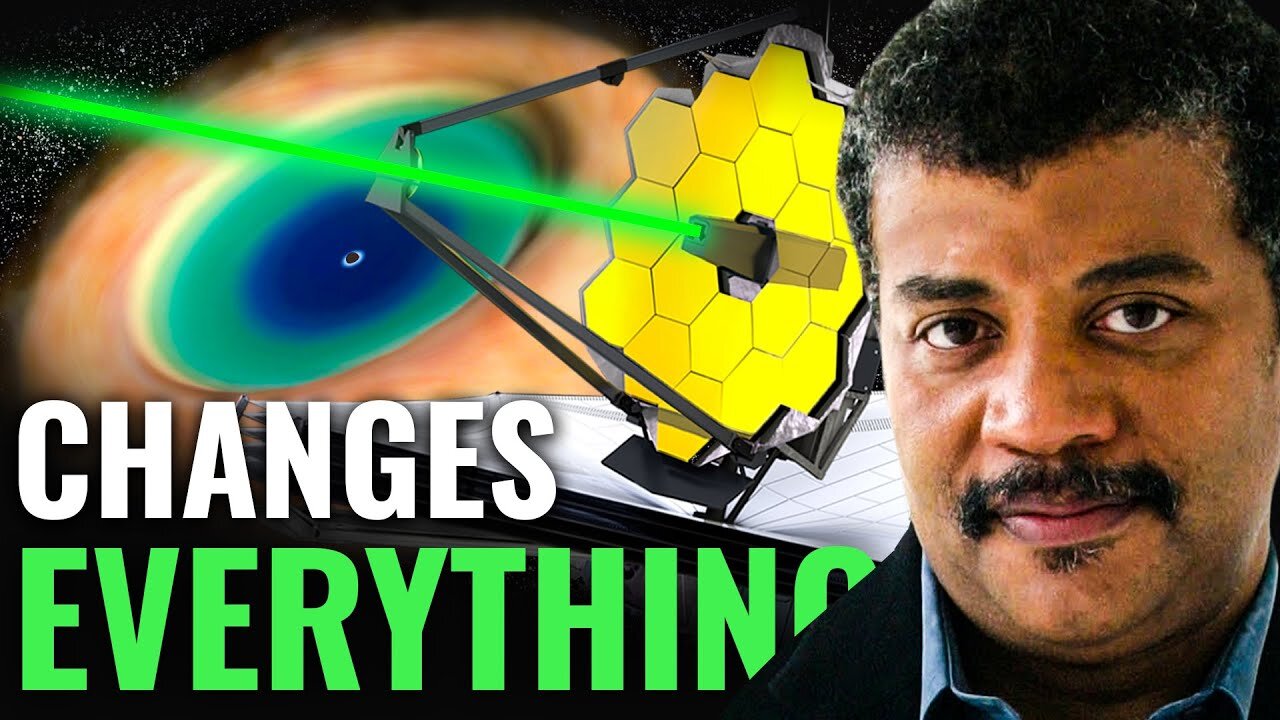Premium Only Content

James Webb Telescope Terrifying Discoveries Will Change Everything!
The James Webb telescope has been conceptualized for more than a decade. Its fans would be happy to hear that it has finally been launched into the dark abyss known as space. It was launched last christmas, and it began its deployment immediately after it entered space. We hope that this telescope would allow us to know a lot more about both our existence, and the possibility of external life outside us.
Since the launch of this $10 billion telescope, its fans have asked nonstop about its progress, and if it really will do what it was set out to do. Join us as we explore all the possibilities of this telescope and give some insight on how this telescope will finally make terrifying new discoveries.
If you’re interested in space travel, you should know that there are a lot of limitations to this particular concept, one of which is the ability to view planets and stars past our solar system. It was even a challenge to view events occurring past mars due to the absence of light. Astronomers, engineers, and astronauts have dreamed of being able to see past our solar system. Now, the James Webb telescope is capable of making it possible.
For those who don't know, the James Webb telescope was designed to the largest telescope ever created. It got launched on December 25th last year from the ESA space site at Koolu via an Arianespace Ariane 5 Rocket. If this telescope performs its purpose, it would allow us to be able to take a look at the events of the big bang. Imagine seeing how the events occurred during the big bang which happened as far back as 200 million years ago.
We would be able to view the first galaxies that were born out of the big bang, and also look at any new planets or stars developing. This would be a phenomenal achievement, and would be such good news for science.
Its journey spans over a million miles to a gravitationally stable point in space. Arriving at that point in space would keep it from leaving the solar system, and will keep it stable enough to take a look at several galaxies. The telescope would then land on a second gravitationally stable point, L2. L2 is a position in space that is in close proximity and alignment with earth and is directly opposite the sun. At this point, it will be able to orbit the sun even more closely.
Interestingly, other telescopes have used this particular area at several points in time and have captured mind-blowing information. If it gets to this point perfectly, it would use the gravitational stability of that point as well as minimum fuel to stay in perfect alignment with the sun, moon, and the earth.
Its successful launch from the earth took about 31 minutes, and scientists, engineers, and fans from all over the world cheered all the way through. We know you might be wondering how its going to survive the full force of the sun. The telescope’s designers understood this, and built a 5-layer, 70-foot long sun shield. It keeps the equipment of the telescope cool and prevents the telescope itself from getting destroyed due to the heat from the sun.
This sun shield has been checked and given the okay by multiple engineers and scientists from around the world due to its ability to protect itself from temperatures of up to 250 degrees Fahrenheit. If you’re watching the video, you would probably notice that the telescope is way bigger than a rocket can fit. Because of that, it was designed in such a way that it can be folded up and safely transported in a rocket. According to NASA, opening it up has been one of the most sophisticated processes they have undergone. What’s more is that the process isn’t over yet, as they have said they still have some work to do.
What’s Next?
Although this telescope has not arrived at its destination yet, it is expected to arrive by January 23rd. The deputy project manager at NASA’s space flight centre said in a conference that between the start of January and the 23rd, the team would spend its time aligning the 18 mirror segments in order to successfully form one giant mirror.
Beryllium was used to produce these mirrors because it is a lightweight metal, and it is fairly resistant to the sun’s rays.
After it has been fully unfolded and assembled, its different compartments will be turned on. The engineers believe that this will happen between 7-14 days.
The distance from the sun ensures that enough darkness is gotten for the heat seeking infra-red studies to be performed. These infra-red telescopes would allow the telescope to view distant galaxies, stars, and planets.
This telescope will be the most powerful telescope ever created, and it has already started breaking records. It surpasses the capabilities of the hubble space telescope, among many others.
-
 10:22
10:22
Future Space
3 years agoScientists Just Discovered The Most Terrifying Planet In The Universe! What Is It?
841 -
 LIVE
LIVE
EricJohnPizzaArtist
4 days agoAwesome Sauce PIZZA ART LIVE Ep. #70: Movie Night featuring Dark Helmet!
361 watching -
 2:06:00
2:06:00
Joker Effect
2 hours agoMASSIVE UPDATES ON MY CHANNEL... what does 2026 look like? CHATTIN WITH WVAGABOND (The Captain).
15.8K2 -
 2:24:34
2:24:34
vivafrei
14 hours agoEp. 292: Bondi's Betrayal & Comey Judge Caught Lying! Crooks Acted Alone? Judicia Activism & MORE!
195K145 -
 LIVE
LIVE
GritsGG
7 hours ago#1 Most Warzone Wins 4015+!
627 watching -
 LIVE
LIVE
Due Dissidence
11 hours agoTrump SMITTEN By Mamdani, MTG RESIGNS, Hurwitz DOUBLES DOWN on CENSORSHIP, RFK Jr "Poetry" EXPOSED
1,032 watching -
 39:40
39:40
Tactical Advisor
8 hours agoUnboxing New Tactical Packs | Vault Room Live Stream 046
73.9K6 -
 3:30:58
3:30:58
elwolfpr
6 hours agoElWolfPRX Enters the Storm: First Winds
19.5K -
 14:59
14:59
MetatronHistory
21 hours agoAncient Bronze Was Not the Way You Think
43.3K11 -
 LIVE
LIVE
Misfit Electronic Gaming
7 hours ago $1.07 earned"LIVE" WolfPack hunting "ARC RAIDERS" Come Hang out with me.
64 watching